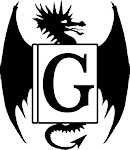The Princess Bride
William Goldman
Harcourt
Fiction, Fantasy/Humor
Themes: Classics, Fairy Tales, Pirates
****
Description
As a boy, William's life was changed the day his father read him an old adventure story, The Princess Bride, by the all-but-forgotten
S. Morgenstern. The tale of the beautiful girl Buttercup, her devoted farm boy Westley, the fearful giant Fezzik and master swordsman Inigo, acts
of bravery and cowardice and True Love, opened his mind and his eyes, leading him to become the successful novelist and screenwriter he is today.
Only when he tried to share the story with his own estranged son did William realize the truth: his father had significantly abridged the original
text, which was less an adventure and more a satire of the ruling class. Thus William set pen to paper (or finger to typewriter key) and revised
the story. This is his work, the "good parts" of Morgenstern's tale.
This edition includes a foreword and a postscript about the aborted sequel, Buttercup's Baby.
Review
Like most people, I've seen (and grew to love) the by-now classic 1987 movie, The Princess Bride, based on this book, though I hadn't actually read it until now. Some elements date it, particularly hints of sexism (Buttercup's not the brightest bloom in the garden, not to mention how the fictitious version of Goldman views his eventual-ex-wife and other females he encounters) and fat-shaming, and other elements skew modern for a supposedly-old fairy tale. Overall, though, it holds up rather well, a light-hearted and amusing romp that nonetheless has a few thorns lurking here and there. The device of Morgenstern and the travails of adapting an old book for modern readers, specifically his own son, grows stale, though, with Goldman frequently intruding on the narrative to remind the reader of the framing device. It particularly gets old in the extra material, as Goldman tries to convince us that not only was Morgenstern real, but that the events in The Princess Bride were based on "Florinese" history. (He also tries to make Florin and Guilder, the countries in the tale, real... as well as Morgenstern's lawyered-up estate that interferes with, and ultimately kills, Goldman's revision of Morgenstern's sequel, Buttercup's Baby.) It just plain doesn't work after a while, with too many breaks in logic. (Even fairy tales have internal logic, which doesn't mesh with real-world logic.) These extras read less like an author augmenting a story and more like a guy who loves the sound of his own voice so much he won't shut up, even in print. As for the fragment of the "sequel," I'm not entirely sure what the point of it was, if Goldman has no intention of finishing it. It also feels forced, particularly the Edgar Cayce reference, without the smooth flow of the main body of The Princess Bride. Taken all together, despite some hiccups and bumps from the overplayed "Morgenstern was real" angle, this is a rather good yarn of adventure, danger, and - of course - True Love.
